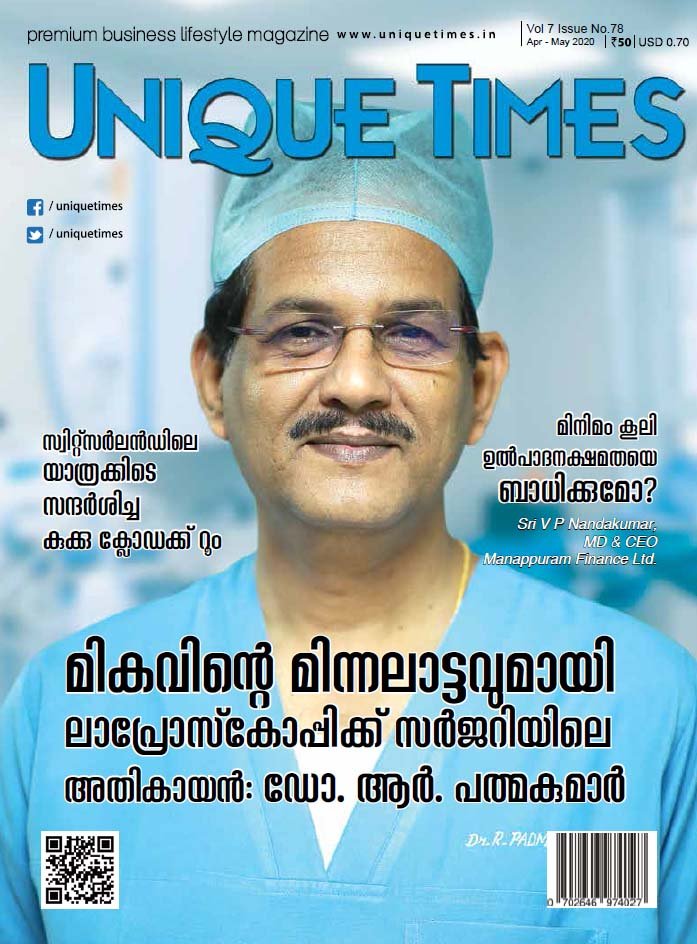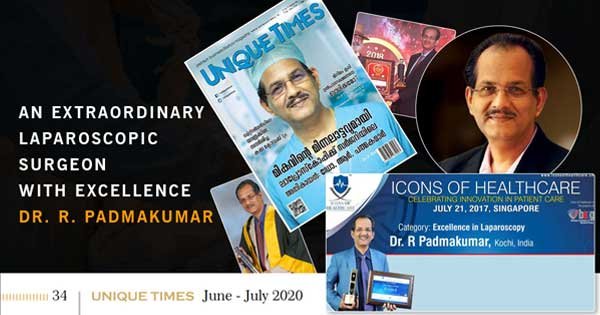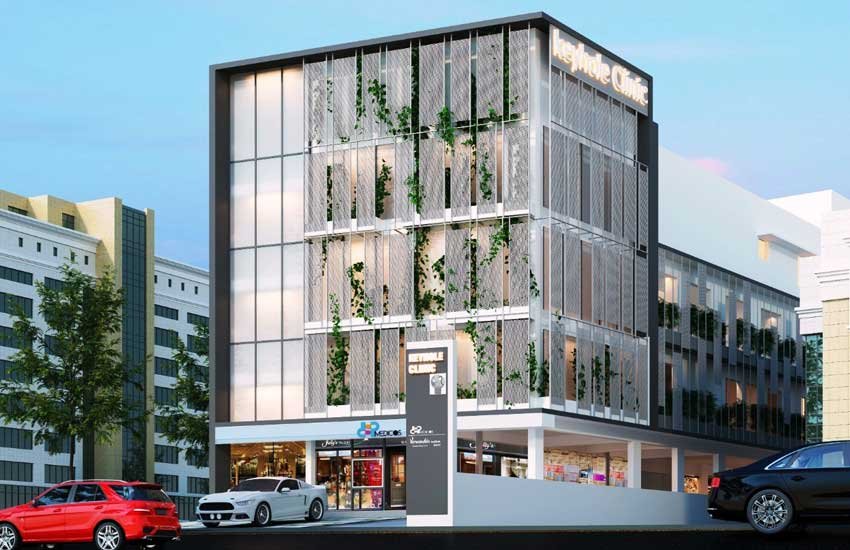Ventral Hernia

What is Ventral Hernia?
A Ventral Hernia or abdominal wall hernia is an abnormal protrusion of the contents of the abdominal cavity or of preperitoneal fat through a defect or weakness in the abdominal wall. The abdominal wall is the musculofibrous covering of the contents of the abdominal cavity.
A ventral hernia is a hernia of the abdominal wall excluding the inguinal area, the diaphragm and the pelvic area. Abdominal wall hernias can be of congenital or acquired variety. The latter can occur either spontaneously or after surgery. When they occur after surgery, they are called incisional hernias. 3-20% of laparotomy incisions develop ventral hernia.
Types of Ventral Hernia
Umbilical Hernia – This occurs at the umbilicus or the belly button when the intestine pushes through the umbilical ring. It can be seen as a bulge at the area of the belly button.
Lumbar Hernia – Lumbar hernia occurs when the bowel, omentum or preperitoneal fat herniates through a defect in the lumbar triangles. This can be Right Lumbar Hernia or Left Lumbar Hernia
Hypogastric Hernia – This occurs in the hypogastric region.
Epigastric Hernia – An epigastric hernia occurs when the intestines protrudes through the abdominal wall muscles between the umbilicus and the chest.
Spigelian Hernia – A Spigelian hernia is a ventral hernia where the abdominal contents or peritoneum through the Spigelian fascia that is comprised of the transversus abdominis and the internal oblique aponeuroses.
Strangulated Hernia
When the intestinal tissue gets tightly caught as a bulge in the abdominal wall, then the condition is termed as strangulated ventral hernia. In this case the intestinal tissue cannot be pushed back and cuts the blood flow to the area causing the hernia contents to become ischemic due to compromised blood supply. This requires emergency surgery.
Causes of Ventral Hernia
There are several factors that lead to the formation of ventral hernia and these include:
- Pregnancy
- Obesity
- Record of previous hernias
- Previous abdominal surgery
- Injuries to the bowel area
- Frequently lifting and pushing of heavy objects
- Week scar tissues from previous abdominal surgery
Symptoms
Symptoms may last for weeks or months and includes:
- pain and discomfort in the abdominal area during prolonged walking, standing or lifting heavy objects
- outward bulging of skin or tissues in the abdominal area
- nausea
- vomiting
- Swelling in the bulged area
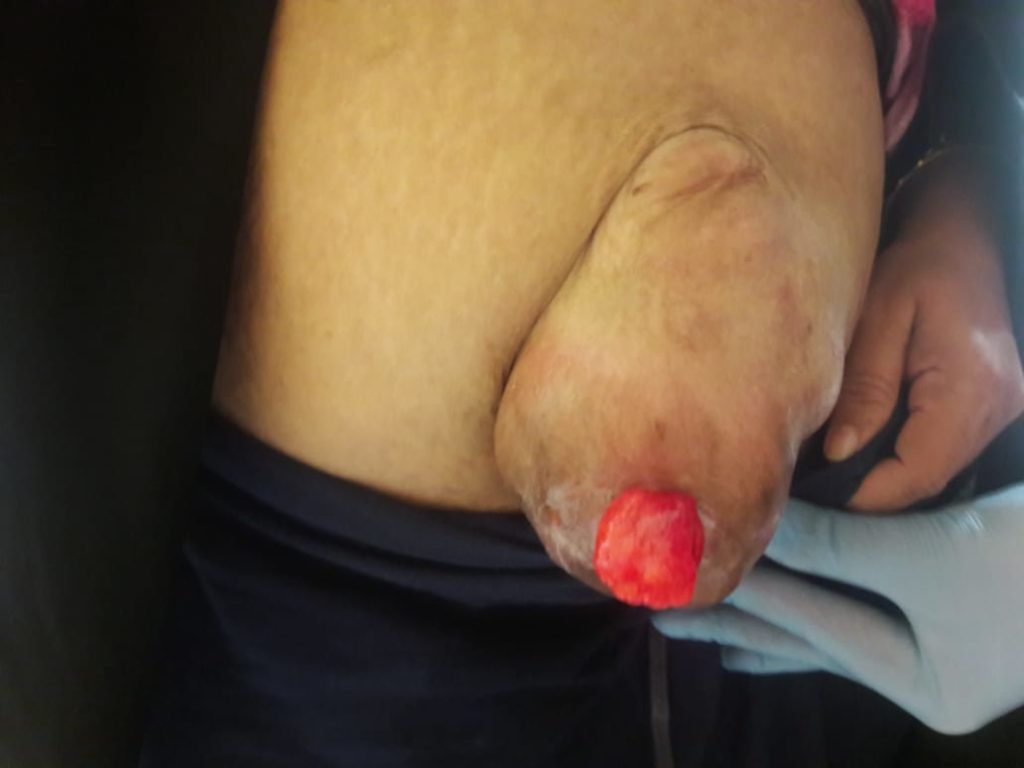

Diagnosing Ventral Hernia
The doctor performs a physical exam and asks about the symptoms. The doctor suggests various imaging test including ultrasound scan, CT scan or a MRI scan.
Ventral Hernia Repair
Ventral hernia repair is the second most common type of abdominal hernia operation (25.6% of all hernia repairs). It includes incisional hernia, epigastric hernia, umbilical hernia, lumbar hernia and spigelian hernia.
Laparoscopic Ventral Hernia Repair
Laparoscopic surgery is performing the hernia repair through keyhole incisions using a laparoscope. A laparoscope is a thin long tube that has a camera attached to its end and enables the surgeon to view enlarged images of the cavity and the organs with a monitor attached.
Laparoscopic Ventral Hernia Repair requires much smaller incisions than open surgery; minimal abdominal wall tissue trauma, less hematoma and seroma; wound infection is four-fold less likely to occur in patients with laparoscopic repair. Cosmetic benefit varies from case to case (lack of long scar vs. correction of abdominal bulge and apron). Length of hospital stay after laparoscopic ventral hernia repair is found to be shorter in the majority of cases.
Laparoscopic surgery has several advantages with a faster recovery time and minimal scars. Advantages of laparoscopic hernia removal include:
- Few small incisions
- Lowers chance of infection
- Less postoperative pain
- Reduced hospital stay
- Minimal scars
- Faster recovery time
When approaching the hernia with the traditional open technique, the fascial defect is ideally repaired with a prosthetic mesh placed in an onlay/subfascial position. However, the appropriate positioning of the mesh usually involves a large incision and a fair amount of dissection, often complicated by the patient’s body habitus. The laparoscopic approach to ventral hernia repair offers a minimally invasive technique to repair these hernias.
The surgery is initiated by administering a dose of anesthesia to relax the patient and to reduce the pain and discomfort caused by the condition. The surgeon makes a small incision in the abdominal wall and inserts a laparoscope to view the internal abdominal cavity and associated organs. A laparoscope is a thin long tube that has a camera attached to its end and enables the surgeon to view enlarged images of the cavity and the organs with a monitor attached. After investigation, the surgeon makes few more incisions to insert hernia repair tools and the bulged tissues are pushed back and placed in position. Later a mesh is placed in the weak spot of the abdominal wall to prevent the possibility of reoccurrence of hernia. Later the incisions are closed and sutured.
After the surgery, meditations are administrated to reduce pain and discomfort from the surgery. The patient can leave the hospital in a day or two and are instructed not to do any heavy tasks like weight lifting. Diet rich in fiber content and adequate fluid intakes is instructed.
Videos Related to Hernia
| Topic | Watch |
|---|---|
| Malayalam - What is Hernia and Different Types of Hernia | Watch Video |
| English - What is Hernia and Different Types of Hernia | Watch Video |
About Dr. R. Padmakumar
Dr. R. Padmakumar is one of the Best Hernia Surgeon in India. He has been changing lives through Keyhole Surgery. He has got more than 30 years of hands-on experience in laparoscopic Surgery in major hospitals across India and has completed more than 7000 cases of Laparoscopic Hernia Surgeries. Dr. Padmakumar has trained more than 300 surgeons from all over the world the art of laparoscopic surgery especially Laparoscopic Hernia Surgery. Dr. Padmakumar is also hailed as one of the Best Bariatric Surgeon in India & UAE. He is renowned for new and improved treatment techniques and the first in the World to perform Scarless Bariatric Surgery with Tummy Tuck / Abdominoplasty. He is also one of the very few thyroid surgeons in India doing Endoscopic Thyroidectomy (scarless thyroid surgery).
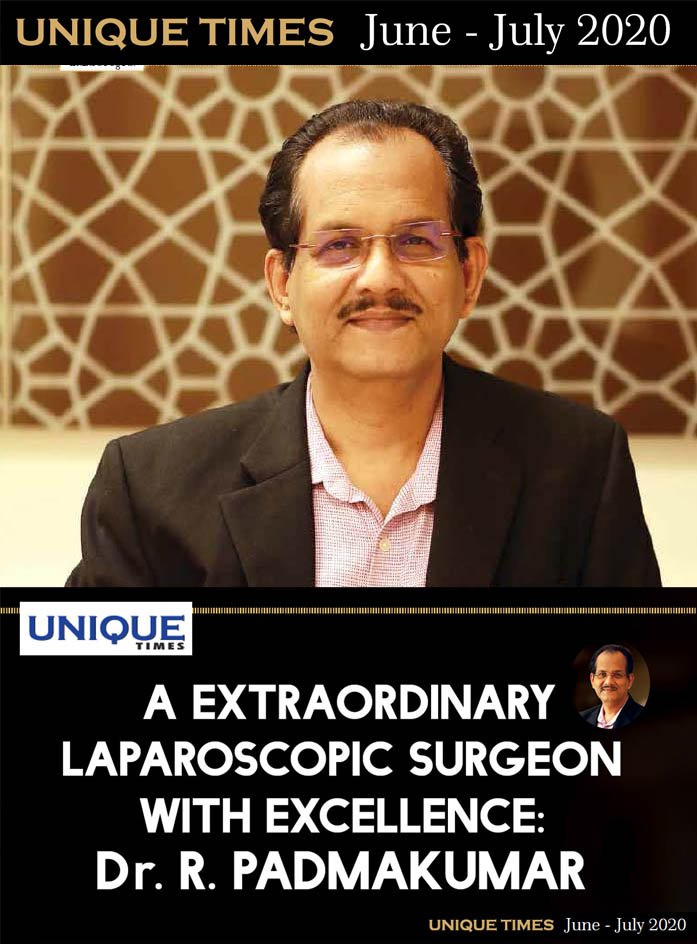
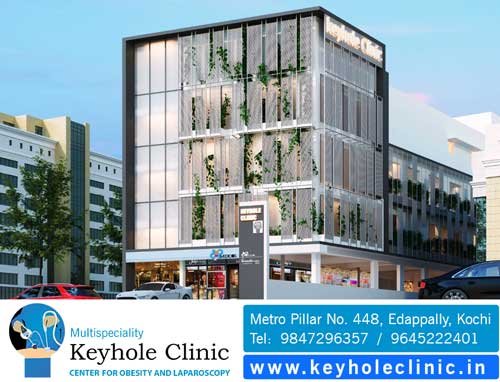
-
Anal Fissure Treatment
-
Gynaecomastia Treatment
- Piles / Hemorrhoids Treatment
- Varicose Veins Treatment
- Laser Treatment for Varicose Veins
- Diabetic Foot Treatment
